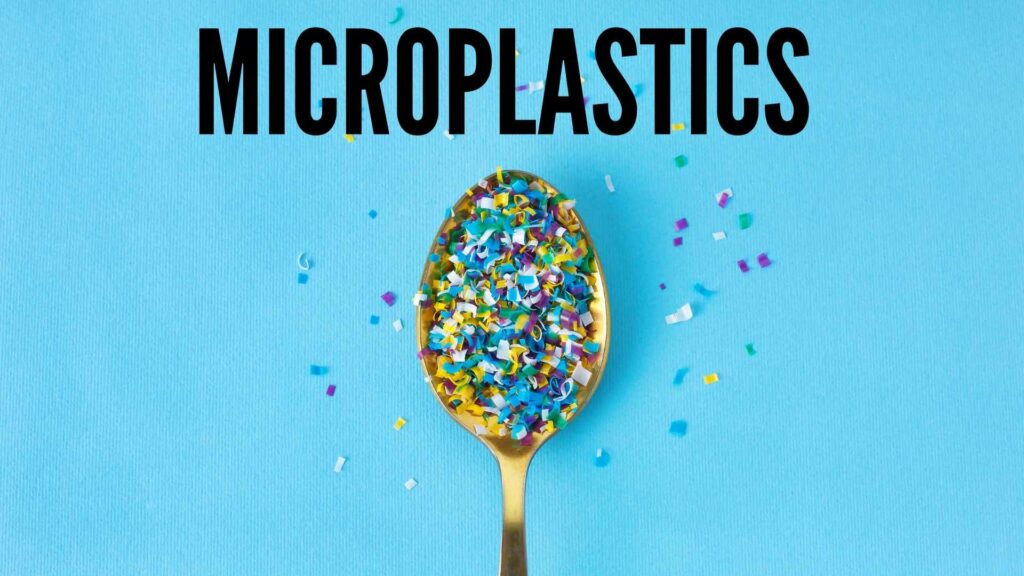I’m sure you have heard about these sneaky tiny plastics that end up in every place you can possibly imagine. From the deepest part in the Pacific Ocean, to our own bodies, in the soils where we grow our crops and throughout multiple food chains in different ecosystems. If you’re worried about the undesired presence of plastic in your diet, you’re not alone! However, since our love affair with plastic is quite a recent one (considering the historic span of human presence in the world) we still don’t know a lot of the consequences and long-term effects of this worldwide problem. But still, the forecast is not good, so it is definitely better to act now rather than regret later. In this article we will present to you all the available information about microplastics in a nutshell, so you can act for yourself and start your own plastic detox.
What are microplastics?
Microplastics (apologies for the very obvious statement) are very small particles of plastic. They measure less than five millimeters; a sesame seed is a good size reference. There are two possible ways in which microplastics can be brought into the world:
- Primary microplastics: Industries purposely create these tiny beads of plastic for different commercial applications (think about microfiber cloths or beauty scrubs). Plastic pellets are also the raw materials for many other industrial and manufacturing processes.
- Secondary microplastics: They are generated when larger objects made out of plastic (bottles, packaging, toys, clothes) fragment into small pieces because of environmental factors mostly from the sun or the friction caused by waves.
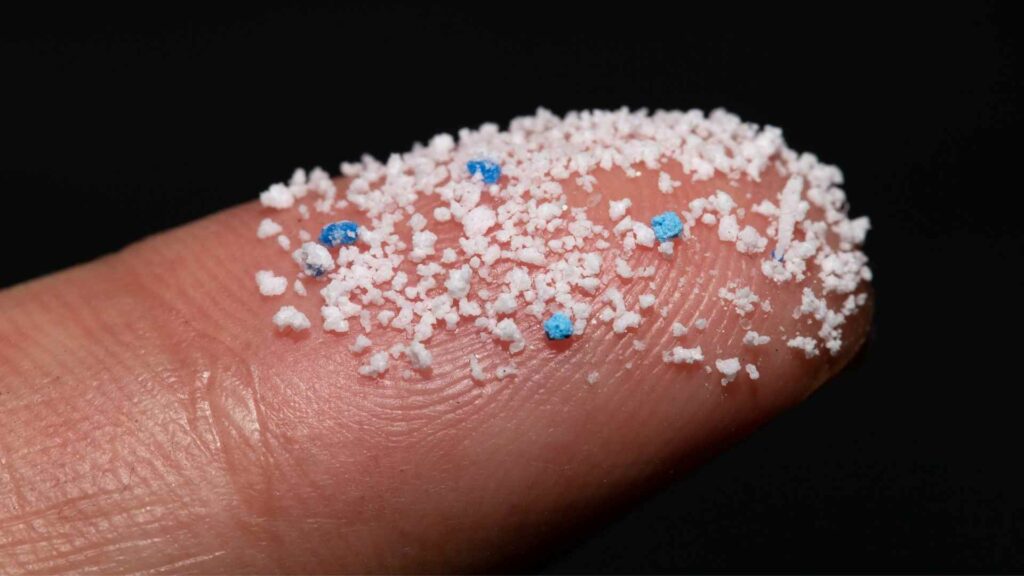
But, are they really everywhere!?
Yes, unfortunately they are in fact everywhere. Here is a small list of random places where microplastics have been found by scientists: the summit of Mount Everest, tap water, honey, human placenta, the Mariana Trench (deepest point of the ocean), rice, both in Arctic and Antarctic ice and even floating as airborne particles. Needless to say, the list goes on and on. I know it can be surprising because all of this microscopic pollution escapes our plain sight, but some of it is quite evident. If you find yourself in any beach in the world, you just have to pay attention: look at the sand and you will begin to see these glimmering transparent grains, which often come in different colors. You might be looking at a tiny part of a plastic bottle you drank water from 20 years ago!
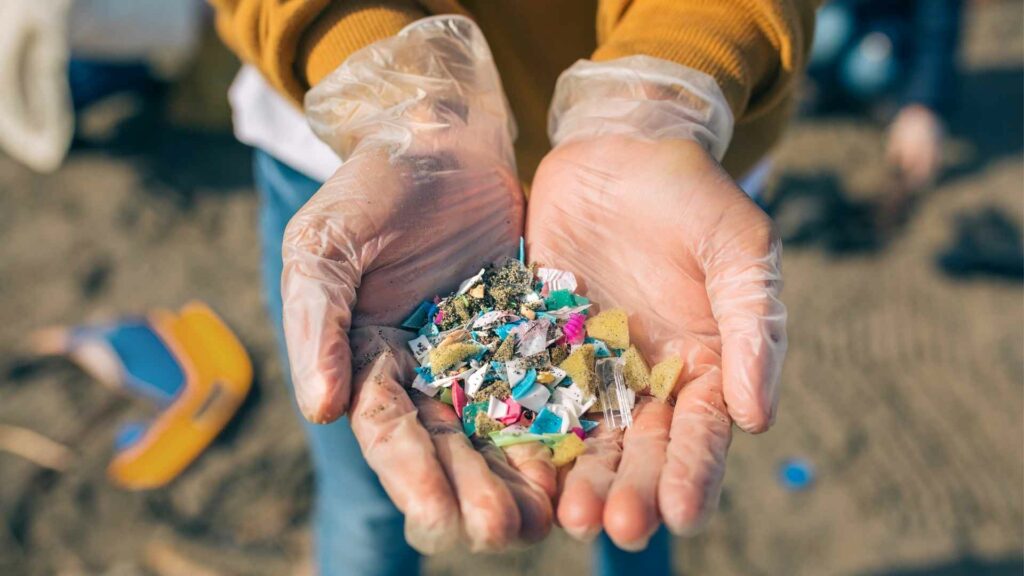
How much microplastic is there in the world?
Because of how contemporary societies manage waste, most microplastics find their new home in the water: oceans, rivers, lakes and underground deposits. Storms and other natural phenomena carry this plastic dust into marine environments. The approximate amount of microplastics in the world’s oceans is about 24 trillion pieces, this is even more than the number of galaxies NASA estimates exist in the universe. And we are not even counting what is inland. The other problem is that microplastics don’t plan to go somewhere else anytime soon, and probably they will outlive us. Plastics can take several hundreds of years to decompose; in the meantime, they can cause huge damage to ecologic balance.
How did we end up in this situation?
So, by now probably you will want some answers regarding how did we end up in this awful situation. And the quick answer is because plastic is so convenient, cheap and durable (maybe, too long-lasting). In the 1950’s we decided everything should be made with plastic and then we continued to think in the same way for the upcoming decades. But actually some products in particular, because of their composition and fabrication process, are more to blame for the microplastic crisis, here is a list of some of them:
- Microfibers / Synthetic fabrics (35% of the microplastics in the world’s oceans)
- Tires (28% of the microplastics in the world’s oceans)
- Glitter
- Beauty scrubs and exfoliants
- Makeup
- Cigarette butts
- All kinds of wet wipes
- Tea bags
- Water bottles
- Virgin plastic pellets created for manufacturing processes
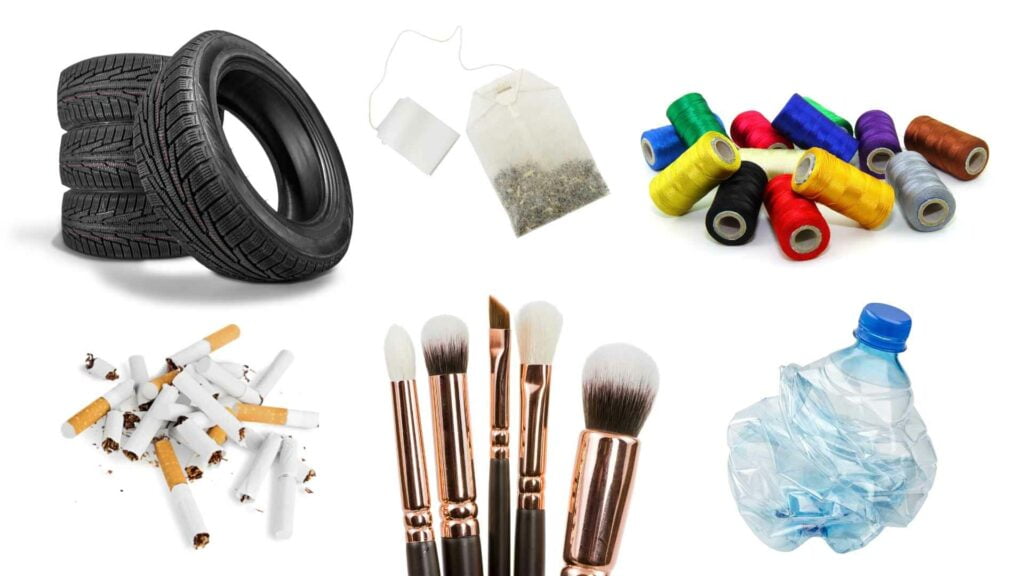
Consequences and effects of microplastics
For humans: According to recent studies, we breath, eat and drink microplastics all of the time, we can even absorb them thorough our skin! The unvoluntary presence of plastics in our diets can be shocking: we can consume between dozens to 100,000 fragments of microplastics each day. For a visual reference this is almost like eating a credit card worth of plastic each year! So, what are the consequences of having so much plastic running free in our organisms? Since this is a recent topic of concern, scientists don’t have definitive answers and further research is required, but these are some of the potential effects that have been considered already:
- Irritant effects: Inflamed lungs, hearth and digestive system, potentially having carcinogenic consequences.
- Toxic effects: When plastics have been treated with chemicals and pigments, they can alter our hormonal system and unchain allergic reactions.
- Cellular damage: A 2021 study from the UK, found that micro plastics can provoke cell death and damage the cell walls.
For wild life: It is understood that plankton is the base of all marine life, however in recent years scientists have found that these organisms have been feeding with the plastic that is floating across the ocean’s waters. These small animals are then consumed by crustaceans and fish, until these larger animals end up being hunted by carnivorous predators or caught by our fishing nets. The negative effects are significant:
- Disruption of the immune system
- Obstructed gills
- Blocked intestines with plastic fibers
- Overall impaired nutrition
- Genetic alterations unchained by toxic chemicals present in plastics
- Affected capacity to reproduce
- Corals can store plastic within their structures causing stress and potentially speeding up the process of bleaching
- Lack of breeding grounds if coral reefs collapse
For the planet: Plastic has only been in the world for less than one hundred years, however since it is not a biodegradable material it will potentially remain in the planet for hundreds or even thousands of years more. As much as we keep fabricating plastic objects, this waste will only accumulate. It is important to highlight that these consequences are irreversible.
- Generalized collapse of ecosystems due to ecological unbalance
- Extinction of species, both in animals and plants
- Huge negative effects on the fishing and tourism industries
- Affectations on the global food supply
- Irreversible chemical impact because of the buildup of other pollutants
- Toxicity levels in the oceans could increase due to the alterations in the health of plankton and other filter feeders (sponges, clams, whales, etc)
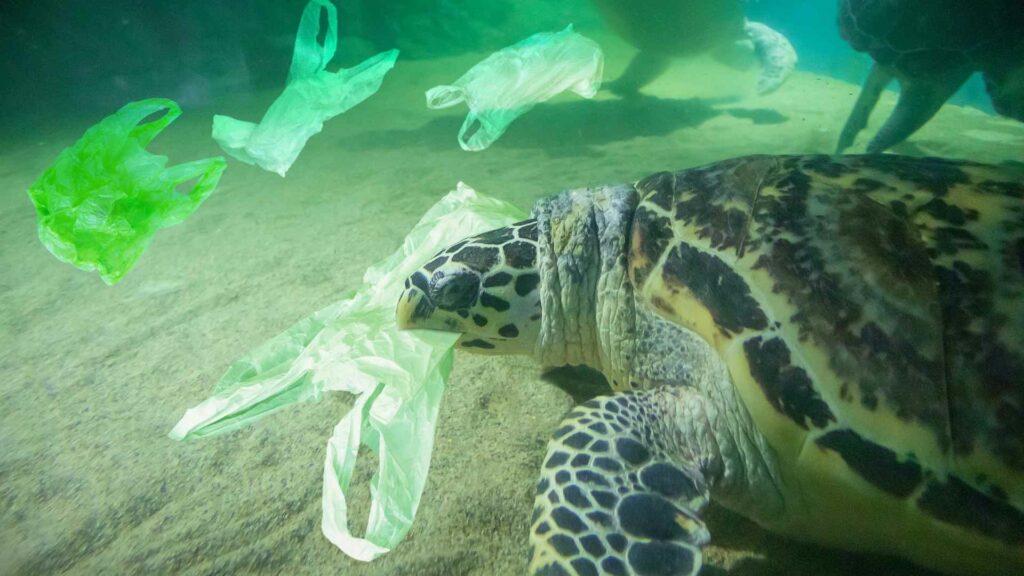
Deplastify your life: avoiding microplastics in your home
But not everything is bad news, there are some easy and doable ways to keep plastic out of your life and your home. Here is a list of some of the most effective strategies to achieve it:
- Filter your drinking water: First of all, stop drinking your water from plastic bottles! Then get yourself a good filter. Microfiltration faucet filters (EcoPro) and reverse osmosis are great options and have showed to remove 100% of microplastics. If you are on-the-go, use a reusable stainless steel bottle to transport your liquids.
- Modify your diet: Since microplastics are more prevalent in marine ecosystems, it is advised to reduce your shellfish and fish consumption (good news for the vegans out there!). Brew your tea with loose leaves, avoid using bags which often are filled with plastic, which then gets released into your hot beverage. Avoid food that is stored in cans or plastic containers, go for fresh produce.
- It is time for a new laundry routine: Each time you wash your clothes, millions of microplastics are released and go down the drain. You can buy a filter for your washing machine (Lint LUV-R is a good option), although it would require a special installation. You can also use other accessories that are specially designed for catching these plastic particles (laundry bags and laundry balls). Another good eco-friendly habit is to just wash your clothes when you have a full load in the basket and to use the cold water setting. It is also better to hang your clothes and let them dry in the sun instead of doing tumble-drying (which will also end up damaging your favorite jacket).
- Microwave + plastic = bad idea: Simply put, when you heat any kind of plastic, it breaks down into tiny particles and then you end up eating your yummy pasta dish with a bit of synthetic garnish. It is better to heat in the stove, or if you have to use the microwave, get yourself some glass containers.
- Make your closet go natural: After reading this article, you will be sure about one thing: nylon, polyester, rayon, spandex, etc, are not good for the planet. Instead buy clothes made with: cotton, bamboo, linen, silk, wool and hemp. If it has a “organic” label attached, that’s even better. Although the best advice regarding clothes is to buy less, borrow or rent more and buy second hand. You can also check out the webpage goodonyou which has various lists with the most sustainable and ethical brands in the US, UK and Europe, they even have an app you can download!
- Check your products before buying: Visit the website Beat the Microbead by Plastic Soup Foundation or download their app in the App Store or in Google Play. They have a HUGE list of products and brands (mostly from the beauty industry) and they will let you know if your toothpaste, makeup or sun care product is filled with plastic or not. They categorize everything in four easy-to-understand categories: Red, Orange, Green and Zero Plastic Inside.
Conclusion and a bit of hope
Even though this might sound like a Greek tragedy of the age of plastic, there are some reasons for hope. Scientists from different fields are currently working to create solutions that might be able to help the planet to deal with this ecological crisis. For closing this article on a positive note, here are three projects that give a glimpse of possible solutions for the future:
- Fungi are hungry for plastic: This might sound like something out from a science fiction movie, but Yale researchers found a fungus called Pestalotiopsis microspora in the depths of the Amazon rainforest in South America. They found out that this organism was able to feed on polyester polyurethane (a type of plastic), even in a water environment. So maybe in the future this fungus will join us in our global clean-up efforts, eating their way through the Pacific Garbage Patch.
- Microplastic magnet: Fionn Ferreira is a young Irish scientist, who at only 20 years of age has already created a fluid that behaves like a magnet and can remove particles of plastic from water samples. Companies like Google and Suzuki have given attention to his initiative, and they are trying to create a filtration system that involves his homemade invention.
- With a little help from… Super enzymes?: Researchers from the Kyoto Institute of Technology in Japan found that there are micro-organisms that produce what they called “Super enzymes”. Enzymes are substances that can unchain chemical reactions. And these particular substances are absolutely hungry for plastic, they can breakdown PET, which is the material used for making plastic bottles. Maybe bacteria will end up being the superhero we all need right now.
